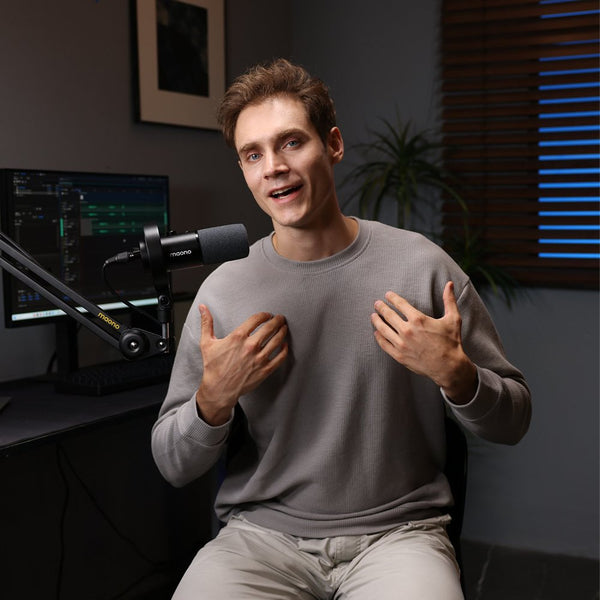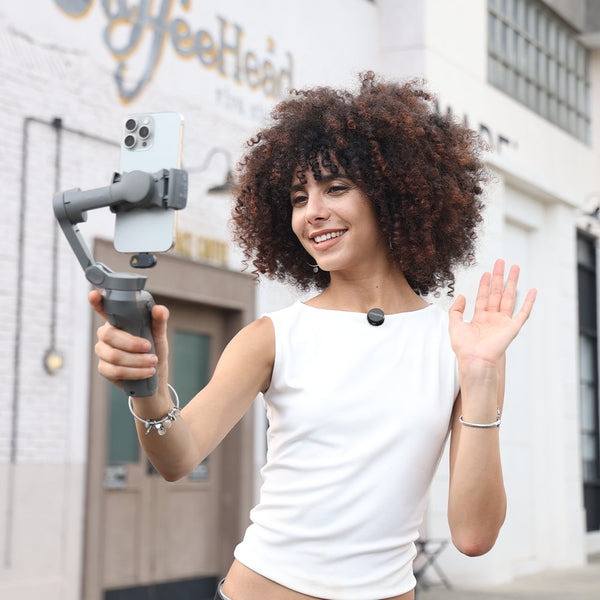Fasting can sound intimidating, especially when combined with exercise. To avoid feeling negatively about fasting and cardio, let’s explore and learn what we need to know to determine if these steps toward weight loss are right for us. Whether you're documenting your journey with a wireless microphone, a portable wireless microphone system, or just starting out, understanding your options matters.
Intermittent fasting has exploded in popularity as a lifestyle choice for weight loss, improved health, and metabolic flexibility. But with so many fasting protocols available, it can be overwhelming to choose the right one. Whether you're trying to shed fat, preserve muscle, or simply feel more energized, understanding the different fasting types is the first step.
Here’s a breakdown of the most popular types of intermittent fasting:
-
16:8 – Fast for 16 hours and eat during an 8-hour window. This is one of the most manageable methods for beginners.
-
5:2 – Eat normally five days a week, and restrict calories (usually around 500–600) on two non-consecutive days.
-
Nightly – A natural overnight fast of 12–14 hours, typically from after dinner to the next morning. Ideal for maintaining general metabolic health.
-
Up-to-the-Ninth-Hour – Stop eating after 3 p.m., creating a longer fasting window without drastically reducing food intake.
-
One Meal a Day (OMAD) – You eat once per day, typically within a 1-hour window. Great for rapid fat loss but requires discipline.
-
Alternate Day Fasting – Fast every other day, either completely or with very limited calories (about 500).

OMAD, 16:8, or 5:2: What Type of Fasting Is Right for You?
Choosing the best fasting method depends on your lifestyle, health goals, and daily energy needs. The 16:8 method suits most people, especially beginners, as it fits well with daily schedules and doesn’t feel overly restrictive. OMAD can yield faster fat loss but may not be sustainable long-term for everyone. The 5:2 plan is a middle ground—less intense than OMAD, but still effective for weight management.
Is OMAD Safe Long-Term?
While OMAD offers benefits like insulin sensitivity and calorie control, doing it long-term can risk nutrient deficiencies, energy slumps, and social isolation during meals. It’s essential to prioritize nutrient-dense meals and consult a healthcare provider before adopting OMAD as a permanent habit.
How Do Different Fasting Styles Affect Muscle Loss?
Muscle loss is a concern with any calorie-restricted regimen. However, fasting styles like 16:8 or 5:2, combined with resistance training and adequate protein intake, help preserve lean muscle mass. OMAD and Alternate Day Fasting, if done improperly, can lead to muscle breakdown due to insufficient protein distribution throughout the day.
Which Fasting Method Works Best for Fat Loss?
For many, OMAD and Alternate Day Fasting provide quicker fat-loss results due to lower overall calorie intake. However, 16:8 is often the most sustainable and effective for long-term fat loss when paired with exercise. Ultimately, the best method is the one you can maintain consistently.
Can Women Follow the Same Fasting Plans as Men?
Women can fast successfully, but hormonal differences require some modifications. Extended fasting (like OMAD or Alternate Day Fasting) may disrupt reproductive hormones in some women. Nightly fasting or 14:10 (a variation of 16:8) might be more suitable for females, especially during menstruation, pregnancy, or high-stress periods.
What Should You Eat When Breaking a Fast?
Break your fast with balanced meals containing lean proteins, healthy fats, and complex carbs. Good examples include grilled chicken with quinoa, avocado toast with eggs, or a smoothie with protein, berries, and spinach. Avoid breaking fasts with processed sugars or high-fat junk food as it can cause energy crashes and bloating.
How Long Does It Take to See Results With Intermittent Fasting?
Most people see noticeable changes within 2 to 4 weeks of consistent fasting, including better sleep, increased focus, and weight loss. Significant body composition changes typically take 6–12 weeks, especially when paired with strength training and a clean diet.
Cardio Tips:
What’s the Difference Between HIIT and LISS Cardio?
HIIT (High-Intensity Interval Training)
This involves short bursts of intense activity followed by brief recovery periods. It’s effective for burning calories in a short time and improving cardiovascular health.
LISS (Low-Intensity Steady State)
LISS such as walking or light cycling, is performed at a steady pace for longer durations. It's gentler on joints and better for recovery days.
How Much Cardio Should I Do Weekly for Weight Loss?
The general recommendation is 150–300 minutes of moderate-intensity cardio per week or 75–150 minutes of vigorous-intensity cardio. A combination of HIIT and LISS offers the best of both worlds—fat burn and endurance.
Is Fasted Cardio More Effective for Burning Fat?
Fasted cardio can increase fat oxidation, especially during lower-intensity workouts like walking. However, it doesn't guarantee more fat loss overall. The best approach depends on your energy levels, goals, and preferences. Always listen to your body.
Can I Combine Cardio and Weight Training in the Same Workout?
Yes, and it’s often efficient. You can perform strength training first and finish with 15–20 minutes of cardio, or alternate days between the two. This strategy helps improve cardiovascular fitness while maintaining muscle mass.
What Cardio Exercises Are Easiest on the Joints?
Low-impact options include swimming, cycling, elliptical training, and brisk walking. These are ideal for people with joint pain, older adults, or those recovering from injuries.
How Do I Make Cardio More Enjoyable and Less Boring?
To keep cardio exciting:
-
Listen to music, podcasts, or audiobooks with a rechargeable wireless mic for convenience.
-
Try dance workouts or kickboxing.
-
Change your location—take your workout outside.
-
Use apps or fitness games for guided sessions.
-
Set personal goals and track progress.
Wireless Microphone for Vlogging
In the age of digital content creation, good audio quality is as critical as video clarity. Whether you're filming fitness tips, vlogging your fasted cardio experience, or reviewing health products, a high-quality professional wireless microphone system can elevate your content.
What Features Should I Look for in a Wireless Microphone for Vlogging?
When choosing a wireless mic, consider the following features:
-
Noise Cancellation
This feature minimizes background noise.
-
Long Battery Life
This ensures a wireless microphone can perform for extended shooting sessions. This feature is especially important for a rechargeable wireless mic.
-
Stable Transmission Range
Stability of transmission ensures reliable audio up to 50-100 feet.
-
Compatibility
This feature ensures a wireless mic can work with smartphones, DSLRs, and computers.
-
Clip-on Design
This feature could benefit users for hands-free use while moving or exercising.
What Wireless Microphone Works Best With Smartphones and in Noisy Environments?
The Maono Wave T5 stands out as a solid wireless mic for content creators on the go. It features:
-
(ENC) noise cancellation for clean audio in busy settings.
-
USB-C and Lightning adapters for smartphone lav mic and smartphone lapel mic compatibility
-
Low-latency transmission for real-time monitoring.
-
Compact clip-on design ideal for fitness or cooking vlogs.
Its versatility makes it perfect for creators filming both indoors and outdoors—even in windy or noisy environments.
Can I Use Wireless Mics With a GoPro or DSLR?
Yes, many wireless mics, including the Maono Wave T5, come with 3.5mm TRS adapters or can be paired with external audio recorders that sync with DSLR and GoPro setups. For GoPro, you may need a media mod or additional adapter, depending on the model. Always check compatibility before purchase.

Conclusion
Balancing your health goals with the right tools and knowledge can create lasting results. Whether you're exploring intermittent fasting, refining your cardio routine, or upgrading your content gear, consistency and quality are key.
Experiment with fasting styles like 16:8, 5:2, or OMAD to discover what suits your body best. Mix HIIT and LISS to boost fat loss. And when it comes to content creation, a portable wireless microphone system like the Maono Wave T5 ensures your story is heard—clear, powerful, and professional.
Ready to level up your wellness and vlogging game in one shot?



